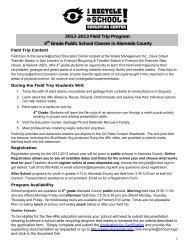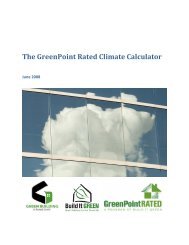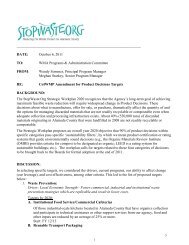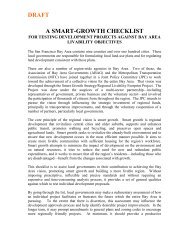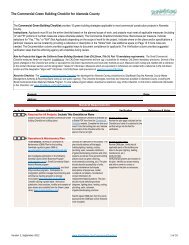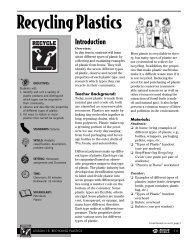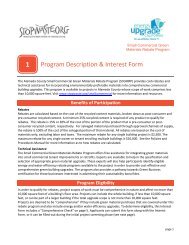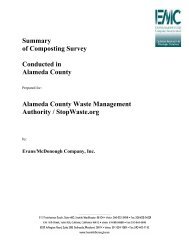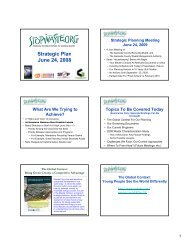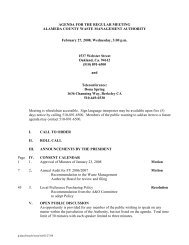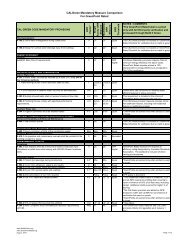Staff Report and WELO Ordinance - StopWaste.Org
Staff Report and WELO Ordinance - StopWaste.Org
Staff Report and WELO Ordinance - StopWaste.Org
- No tags were found...
Create successful ePaper yourself
Turn your PDF publications into a flip-book with our unique Google optimized e-Paper software.
Hydrozones, Plant Factors, <strong>and</strong> Irrigation Efficiency"Hydrozones" are areas containing plants with similar water needs <strong>and</strong> irrigationequipment with similar efficiency. The formulas for estimating irrigation water use rely onnumeric figures assigned to hydrozones called "plant factors" <strong>and</strong> "irrigation efficiencies,"both of which are briefly explained below.Plant FactorsA plant factors is an estimate of a plant species' water need relative to other plants (e.g.,low, medium, <strong>and</strong> high water use plants). The numbers are on a scale of 0 to 1 (e.g., 0.1is very low water need <strong>and</strong> 0.9 is very high). Generally, a plant's water needs are lower ifthey are drought tolerant or are accustomed to temperate climates, such as theLivermore region <strong>and</strong> accordingly lower plant factor numbers are assigned to them.Plants are assigned a higher plant factor number if they are less drought tolerant <strong>and</strong>need relatively more frequent applications of water to survive.The State model specifies using as a primary source for estimating relative water use, theWater Use Classification of L<strong>and</strong>scape Species published by the University of CaliforniaCooperative Extension (WUCOLS). (Proposed Section 13.25.060(B)(4)).Irrigation EfficiencyIrrigation efficiency is another important factor in calculating estimated water use, <strong>and</strong> is ameasure of a given irrigation equipment category's relative efficiency in delivering water.It is expressed on a scale of 0 to 1 with a higher number (e.g., 0.8) indicating a higherproportion of applied water is expected to actually reach the plant's root zones, with lowernumbers indicating less efficiency.Generally, equipment that targets lower volumes of water in a smaller area at or near theplants' base is more efficient (e.g., drip irrigation). Conversely, equipment that sprayshigher volumes <strong>and</strong> pressures of water over a larger more dispersed area is lessefficient.The 1992 City ordinance included charts of plant factors <strong>and</strong> irrigation efficiencies as anassist to staff in administering <strong>and</strong> designers in applying the ordinance. <strong>Staff</strong>recommends retaining these charts.<strong>Staff</strong> recommends minor adjustments in plant factors to add temporarily irrigated areasas required by the State model. The recommended adjustments also recognizeLivermore's hotter climate (<strong>and</strong> higher plant water needs) compared to cooler morehumid microclimates, such as San Francisco's with which Livermore is regionallygrouped in the above-referenced WUCOLS book.105



